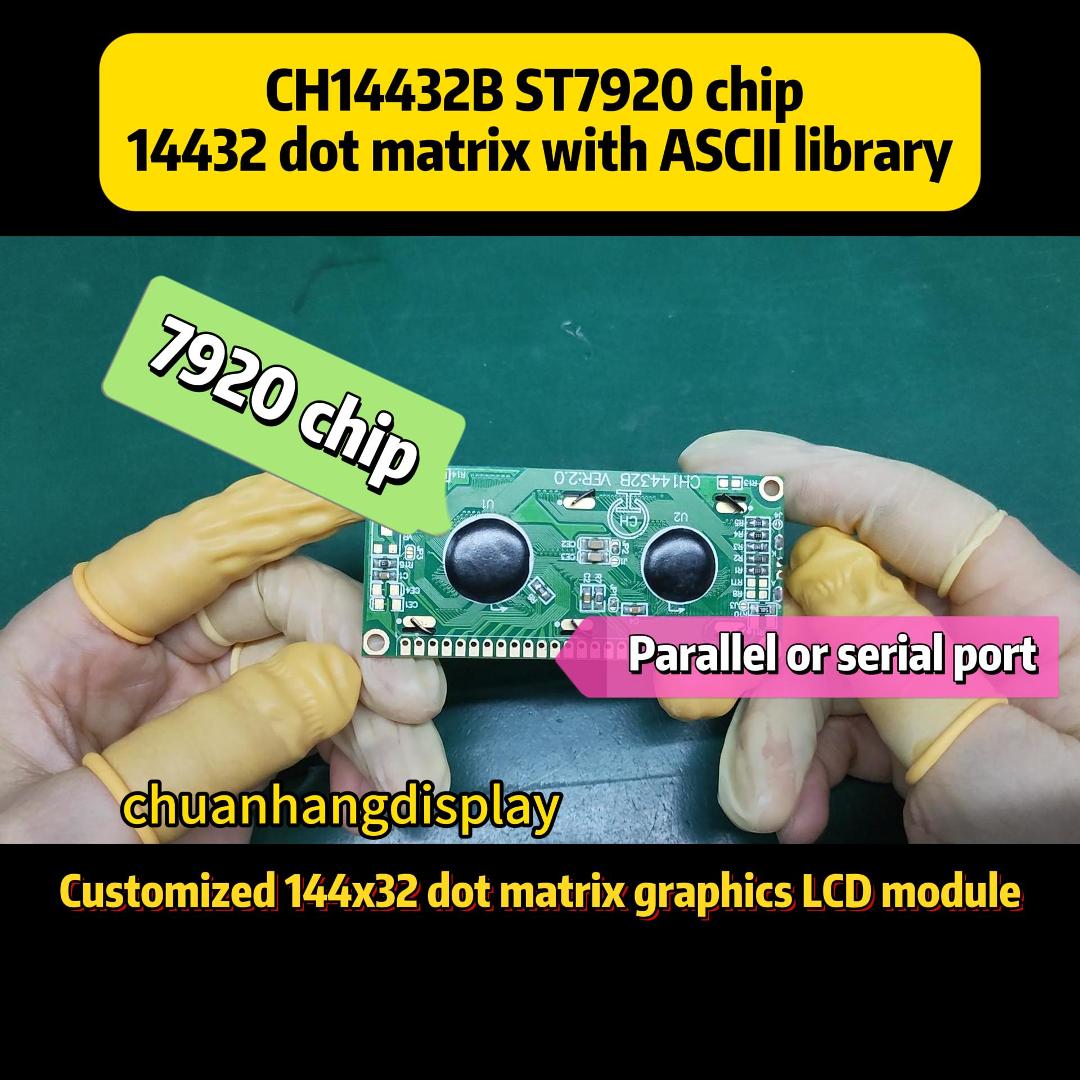When it comes to character LCD modules, the JHD162A is a ubiquitous and reliable component found in countless electronics projects and products. This 16x2 LCD display offers a simple yet effective way to present textual information, making it a favorite among hobbyists and engineers alike. Understanding its intricacies, from its pinout to its common pitfalls, is essential for anyone working with embedded systems. This article dives deep into the JHD162A, exploring its features, how to use it, and the typical problems you might encounter, all while highlighting the quality associated with the brand Chuanhang Display.

The JHD162A is a 16x2 character liquid crystal display (LCD) module. This means it can show two lines of text, with each line capable of displaying up to 16 alphanumeric characters, symbols, or custom glyphs. The "JHD" prefix typically refers to the manufacturer, Jiangsu Jinghanda Electronics, though many compatible modules are produced by other brands, including Chuanhang Display, which is known for its consistent quality and reliability in the display market.
At its heart, the JHD162A is controlled by the Hitachi HD44780 parallel interface LCD controller or a compatible clone. This standardization is what makes it so popular; the command set and interface are well-documented and widely supported by libraries for platforms like Arduino, Raspberry Pi, and others. The module itself is a self-contained unit featuring the LCD panel, a controller chip, a backlight (usually LED-based), and potentiometer for contrast adjustment.
Understanding the technical specs of the JHD162A is crucial for successful integration into any project.
Display Format: 16 characters x 2 lines.
Controller: HD44780 or equivalent. This controller manages the display RAM and generates the necessary signals to create characters on the screen.
Interface: Parallel, 4-bit or 8-bit mode. The 4-bit mode is more popular as it requires fewer I/O pins from a microcontroller.
Power Supply: Typically operates at 5V DC.
Low Power Consumption: The module itself draws very little current, making it suitable for battery-powered devices.
Built-in Character Font: Includes a ROM with ASCII characters, Japanese katakana, and some symbols. It also allows for the creation of up to 8 custom characters (5x8 pixels).
Backlight: Most versions come with a blue or green backlight with white characters, though variations exist. The backlight is often powered separately and can be controlled via a transistor for dimming.
Brands like Chuanhang Display often enhance these standard features with improved viewing angles, higher contrast ratios, and more robust construction, ensuring their modules perform reliably in various environments.

The versatility of the JHD162A LCD module has led to its adoption in a vast array of applications. Its primary role is to provide a simple human-machine interface (HMI).
DIY Electronics Projects: It is the go-to display for Arduino and Raspberry Pi enthusiasts for projects like weather stations, digital clocks, recipe calculators, and sensor readout displays.
Test and Measurement Equipment: Commonly found in multimeters, frequency counters, and power supplies to show measurements and settings.
Industrial Control Systems: Used in control panels for machinery to display status information, error messages, and operational parameters.
Consumer Appliances: Embedded in devices like coffee makers, microwave ovens, and printers to show timers, settings, and status updates.
Point-of-Sale (POS) Systems: Sometimes used in smaller terminals to display transaction information.
Even a reliable component like the JHD162A can present challenges. Here are the most common problems and how to solve them.
Blank Display or No Text Appearing
This is perhaps the most common issue faced by beginners.
Cause 1: Incorrect Contrast Setting. The contrast voltage (controlled by the potentiometer on the back) is set too high or too low. If it's wrong, the pixels will be either completely black or invisible.
Solution: Gently turn the potentiometer with a screwdriver while the display is powered on until the characters become clear.
Cause 2: Wiring or Power Issues. The module might not be receiving power, or the connections might be loose.
Solution: Double-check that the VCC (pin 2) is connected to 5V and GND (pin 1) is connected to ground. Use a multimeter to verify the voltage at the pins.
Flickering or Garbled Characters
If the display turns on but shows random blocks or nonsense characters, the problem is usually in communication.
Cause 1: Improper Initialization. The microcontroller did not send the correct initialization sequence to the HD44780 controller at startup.
Solution: Ensure your code includes the proper initialization routine. When using a library like LiquidCrystal for Arduino, this is handled automatically. If coding from scratch, refer to the HD44780 datasheet for the exact sequence and timing.
Cause 2: Poor Electrical Connections. Loose wires can corrupt the data being sent to the display.
Solution: Securely connect all wires, preferably using a soldered connection or a secure breadboard. Check for cold solder joints if using a custom PCB.
Missing Characters or Cursor
Sometimes, only part of the text appears, or the cursor is not visible.
Cause: Incorrect Data Mode (Command/Data). The Register Select (RS) pin tells the controller whether it is receiving a command (like "clear display") or data (like the letter 'A'). If this pin is wired or controlled incorrectly, the display will not interpret the signals properly.
Solution: Verify that the RS pin (pin 4) is connected to the correct digital pin on your microcontroller and that your code is setting it to the right state at the right time.
Dim or No Backlight
The main display works, but the backlight is off or very dim.
Cause 1: Separate Backlight Power. The backlight LEDs (pins 15 and 16) often require a separate current-limiting resistor.
Solution: Ensure pin 15 (Anode) is connected to 5V through a resistor (a value between 100-220 ohms is typical). Pin 16 (Cathode) should be connected to GND. Warning: Connecting the backlight directly to 5V without a resistor will likely burn out the LEDs.
Cause 2: Damaged Backlight. The LEDs themselves may have failed.
Solution: If you've previously connected it without a resistor, the backlight may be permanently damaged. You can test this by carefully applying 5V (with a resistor!) across pins 15 and 16. If it doesn't light, the module needs replacement.
While many factories produce JHD162A-compatible modules, not all are created equal. Opting for a module from a known supplier like Chuanhang Display offers significant advantages.
Quality Assurance: They adhere to stricter quality control standards, reducing the chance of receiving a dead-on-arrival (DOA) module or one with visual defects like dead pixels.
Consistency: Their products have consistent electrical characteristics and pinouts, which is crucial when ordering multiple units for a production run.
Better Viewing Angles and Contrast: Higher-quality materials and manufacturing processes often result in displays with superior readability.
Support and Documentation: Reputable brands are more likely to provide accurate datasheets and application notes.
In conclusion, the JHD162A is a foundational component in the world of electronics. Its simplicity, standardized interface, and versatility make it an invaluable tool for prototyping and final products. By understanding its operation and being prepared to troubleshoot the common issues outlined above, you can effectively integrate this display into your projects. For the most reliable performance, sourcing your JHD162A modules from a trusted brand like Chuanhang Display is a highly recommended best practice.